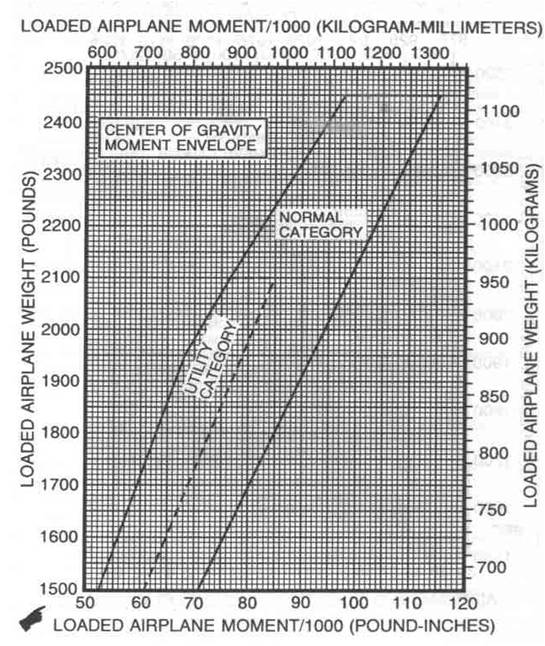For this exercise, please use the Weight and Balance Sheet and the Center of Gravity Moment Envelope Chart below.
Weight and Balance Terms
Arm - the horizontal distance, in inches, from the reference datum to the item
Center of Gravity - the point an aircraft would balance if it were possible to suspend it at that point
Datum Line - an imaginary vertical plane or line from which all measurements of arm are taken
Moment - the product of the weight of an item multiplied by its arm
How to Complete an Aircraft Weight and Balance
To calculate an aircraft's gross weight, begin with the empty weight listed in an aircraft's pilot operating handbook. For this example the empty weight will be 1,516 pounds. From here add the weight for front-seat passengers (including the pilot), back-seat passengers, baggage in the baggage compartment and fuel. Adding these together will provide the aircraft's gross weight.
While still using the Weight and Balance Sheet, you can determine the total moment arm for each portion of the aircraft. The moment arm is the distance an area of the aircraft is from its datum -- an arbitrarily selected point by aircraft engineers that acts as the focus of the center of gravity. Multiplying the empty weight for each section of the aircraft by its moment arm will provide the moment index. The sum of all moment indices will provide the total moment.
In summary
The example aircraft has a 1,516 pound empty weight.
The moment arm is listed on the Weight and Balance Sheet as 40 inches, therefore the aircraft's moment in this section is 1,516 x 40; or 60,640.
Continuing this approach for each section of the aircraft, it is possible to determine the gross weight and total moment.
Next, by dividing total moment by gross weight (empty weight + pilots, passengers, and cargo) the aircraft's overall center of gravity position can be determined.
Using the Center of Gravity Moment Envelope Ensure Chart, the corresponding total aircraft weight and center of gravity can be tested to ensure the moment is within the outlined limits.
By inputting different weights for fuel, cargo, and the front and rear seats it is possible to test center of gravity calculations to see if they fall within these limits.
Center of Gravity Moment Envelope Chart




